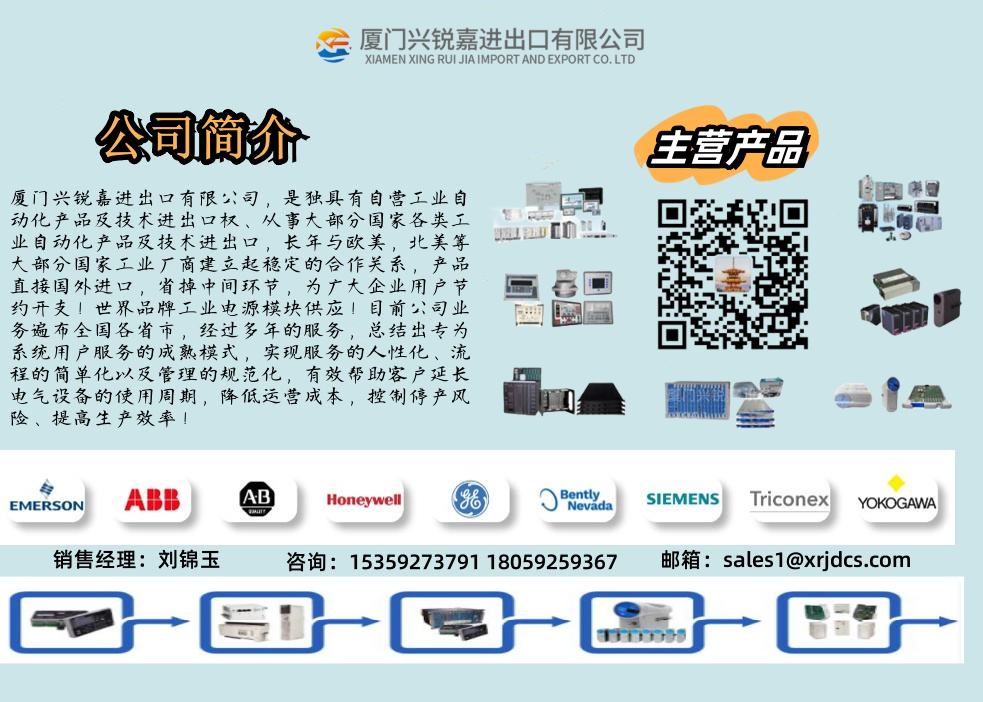Description
产品描述:
YOKOGAWA SC42-SP34 S1 数字输出模块接线组热电偶输入单元用于连接热电偶探头,将探头输出的温度信号转换为可由控制单元识别的数字信号。
该接线组采用 2 线制连接方式,具有防水、防尘、耐腐蚀等特点。
接线组的主要组件如下:
连接器:用于连接热电偶探头
电路板:用于转换温度信号
接地端子:用于接地
接线组的使用方法如下:
将连接器连接到热电偶探头。
将电路板连接到控制单元。
将接地端子连接到接地点。
接线组的参数如下:
输入电压:24 VDC
输入电流:10 mA
输出信号:4-20 mA
横河电机公司于9月18日发布CENTUM VP集散控制系统的增强版本CENTUMTM VP R6.7.1。CENTUM VP是OpreXTM品牌下控制和系统系列解决方案的产品。
横河电机通过引入统一的报警和条件服务器(UACS)增强CENTUM VP R6.7.1的功能,该服务器可以大规模系统的运行。UACS根据标准规则整合工厂设备发出的报警,把重要的报警提示给操作员引起注意,从而使操作人员能够集中精力监控过程以整个工厂的效率。
开发背景
近年来,制造商不断寻求整合其工厂控制室和控制系统的方法,以求减少操作员的数量的操作。这就要求每个操作员能够大范围的活动并处理不断增加的报警,同时根据指示的过程异常类型确定其操作的优先。但是,如果大量的报警连续而地显示,其中重要的报警可能会被忽视,导致响应延迟为严重事故的发生埋下隐。为此,横河开发了UACS,它能够在大型系统中整合及管理报警,重要的报警引起操作员的注意。
功能
UACS基于客户机-服务器架构*运行,集中管理显示在操作员人机界面站(HIS)上的报警。UACS适用于大型工厂的控制系统,包括仪表系统、可编程逻辑控制器(PLC)、电气系统和其他组件。服务器和控制功能被设计为在冗余配置下运行。因此,如果操作服务器出现异常,操作将平稳自动切换到备用服务器。
The YOKOGAWA SC42-SP34 S1 Digital output module Wiring group Thermocouple input unit is used to connect the thermocouple probe and convert the temperature signal output from the probe into a digital signal that can be recognized by the control unit. The wiring group adopts 2-wire connection mode and has the characteristics of waterproof, dustproof and corrosion resistance.
The main components of the wiring group are as follows:
Connector: Used to connect thermocouple probes
Circuit board: Used to convert temperature signals
Ground terminal: Used for grounding
The wiring group is used as follows:
Connect the connector to the thermocouple probe.
Connect the circuit board to the control unit.
Connect the ground terminal to the ground point.
The parameters of the wiring group are as follows:
Input voltage: 24 VDC
Input current: 10 mA
Output signal: 4-20 mA
Yokogawa Electric Corporation has released an enhanced version of the CENTUM VP Distributed control system, CENTUMTM VP R6.7.1, on September 18. The CENTUM VP is part of the OpreXTM family of control and system solutions.
Yokogawa has enhanced CENTUM VP R6.7.1’s capabilities by introducing a unified alarm and condition server (UACS) that can operate large-scale systems. UACS integrates alarms issued by plant equipment according to standard rules, bringing important alarms to the attention of the operator, so that the operator can focus on monitoring the process and overall plant efficiency.
Development background
In recent years, manufacturers have sought ways to integrate their plant control rooms and control systems in order to reduce the number of operators involved. This requires each operator to be able to operate over a wide range of activities and handle the increasing number of alarms while prioritizing their operations based on the type of process exception indicated. However, if a large number of alarms are continuously displayed, important alarms may be ignored, resulting in a delay in response to the occurrence of serious accidents. To this end, Yokogawa developed UACS, which can integrate and manage alarms in large systems and bring important alarms to the attention of operators.
Feature
UACS operates on a client-server architecture * and centrally manages the alarms displayed on the operator Human Machine Interface station (HIS). UACS is suitable for large plant control systems, including instrumentation systems, programmable logic controllers (PLCS), electrical systems and other components. The server and control functions are designed to operate in a redundant configuration. Therefore, if the operation server is abnormal, the operation is smoothly and automatically switched to the standby server.

 全国购买咨询热线
全国购买咨询热线
 销售经理:刘锦玉
销售经理:刘锦玉 手机:15359273791 18059259367
手机:15359273791 18059259367 邮箱:
邮箱:





